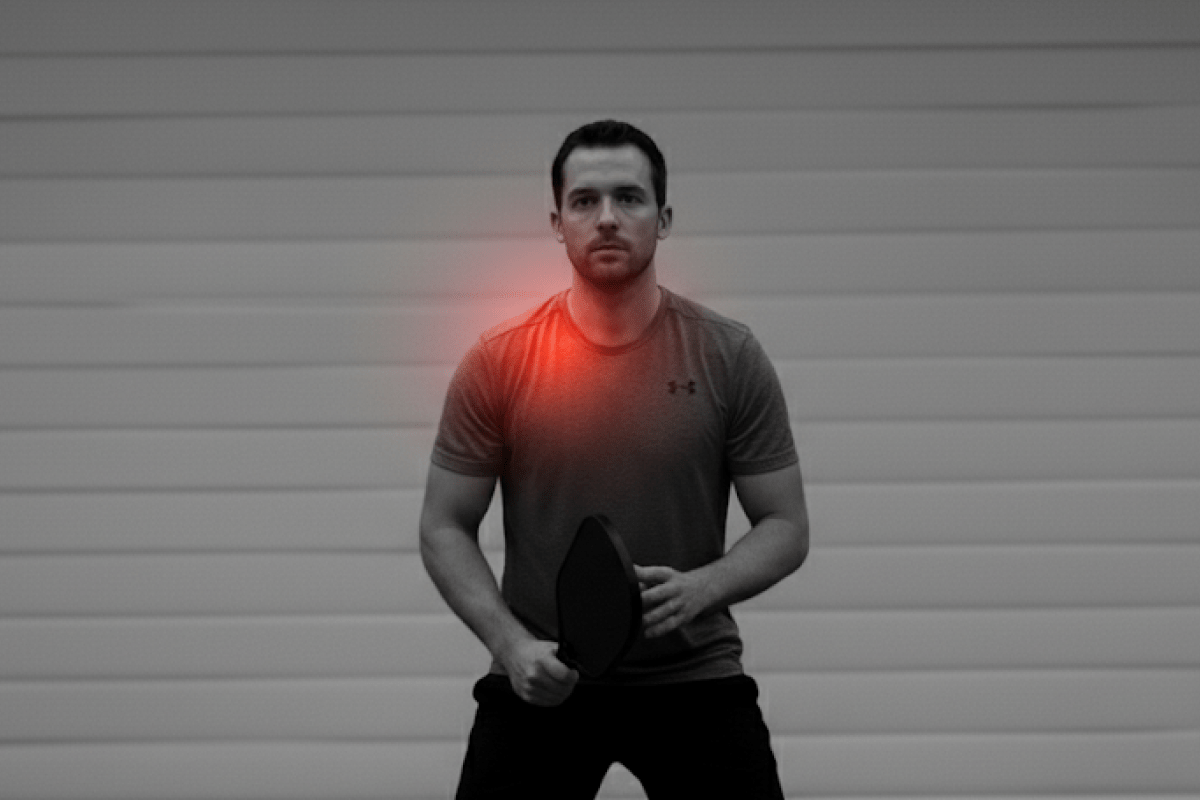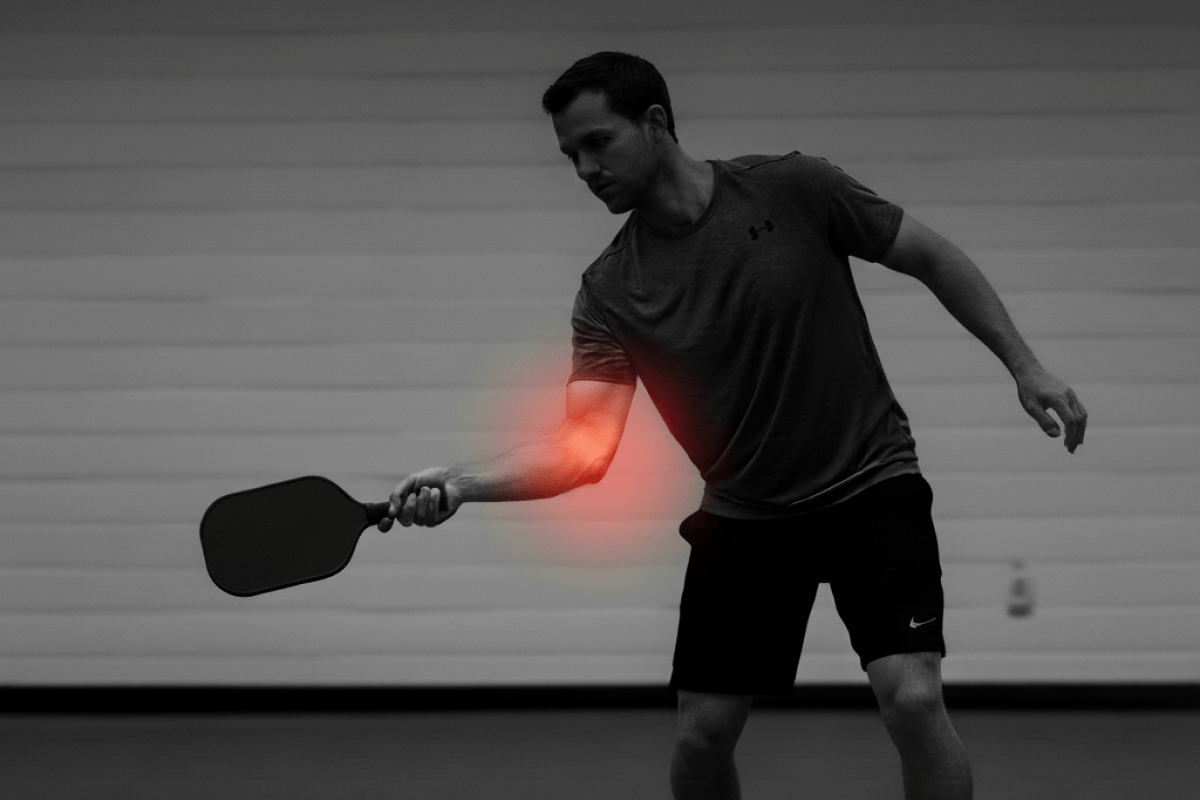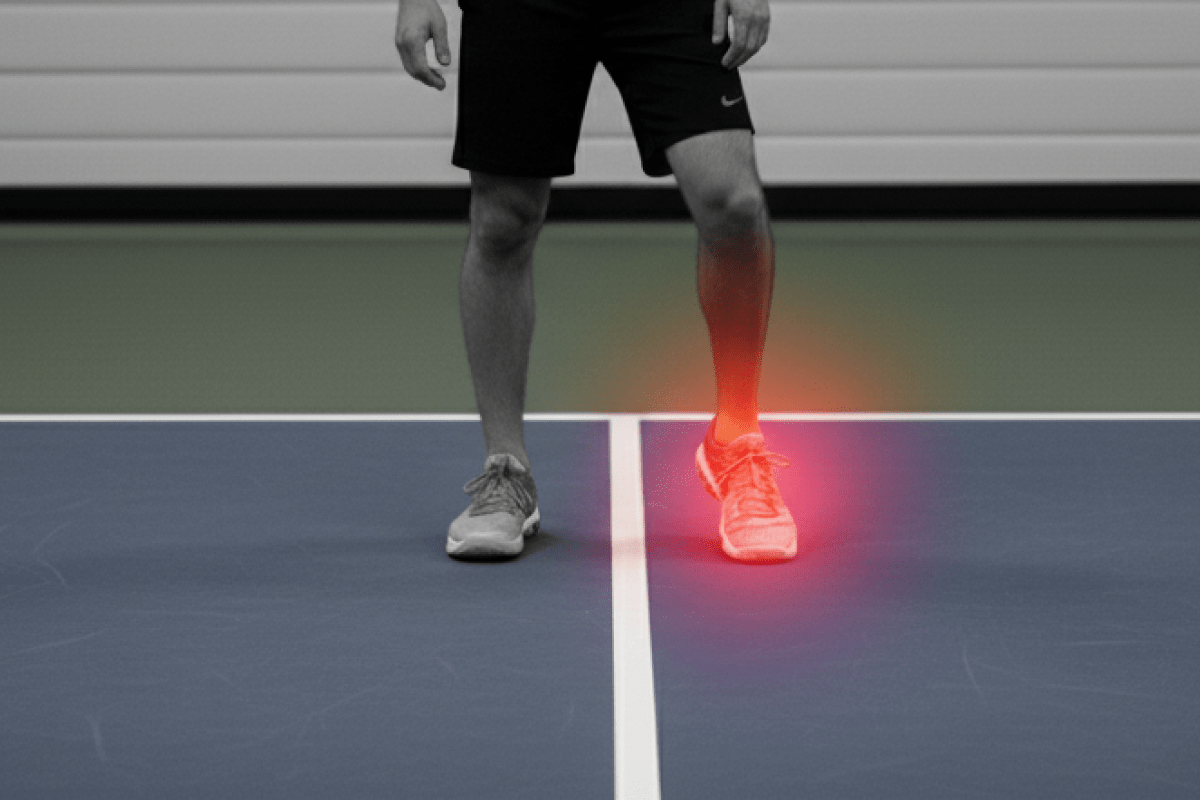What Exactly Is Shoulder Impingement?
Shoulder impingement is a mechanical irritation inside your shoulder joint. Here’s what’s happening:
- Your upper arm bone (humerus) meets the top of your shoulder blade (acromion), forming a narrow space called the subacromial space.
- When you lift or rotate your arm—think serves, overhead smashes, or even reaching for a high dink—the tendons of your rotator cuff and a small fluid sac called the bursa have to glide smoothly through that space.
- If the space gets too tight (from poor posture, weak stabilizing muscles, or a stiff mid-back), these tissues get pinched or rubbed. Repeated friction causes swelling, irritation, and eventually pain.
Impingement isn’t a torn muscle or the result of one bad swing. It’s more like your shoulder running out of room to move freely.
Signs & Symptoms
Pickleball players with shoulder impingement often notice:
- A dull ache or sharp pinch in the front or top of the shoulder
- Pain when raising the arm overhead, especially between 60°–120° (the “painful arc”)
- Discomfort reaching behind the back (like putting on a jacket or fastening a bra strap)
- Weakness or fatigue during serves, overheads, or long dink rallies
- Night pain when lying on the affected shoulder
The Chiropractic Perspective: Look Beyond the Site
While the pain occurs in the shoulder, the source often lies elsewhere—particularly in the mid-back (thoracic spine).
When the thoracic spine is stiff or rounded forward:
- Shoulder blades cannot rotate or tilt properly
- This reduces the space under the acromion, making impingement more likely
Improving mid-back extension and scapular strength creates the room your rotator cuff needs to glide without friction.
A good rehab program doesn’t just treat the sore spot—it restores balance to the whole shoulder complex.
Prevention & Early Management
Warm up before play: Dynamic arm circles, light band work, and gentle torso twists
Avoid pushing through sharp pain: Mild post-game soreness is normal; stabbing pain is not
Strengthen the rotator cuff & scapular muscles: Keeps the shoulder centered and moving well
Maintain tall posture: Open your chest and extend your mid-back between games or after long drives
Act early: Ease off painful motions, ice the shoulder after play, and consult a qualified provider if symptoms persist more than 1–2 weeks
Prehab & Rehab: Exercises to Protect Your Shoulders
Always work pain-free; stop if symptoms worsen.
1. Foam Roll – Thoracic Spine
Purpose: Restores extension in the mid-back so the shoulder blade can move freely.
How to do it:
- Sit on the floor and place a foam roller horizontally behind you.
- Lie back with the roller under the middle of your back, supporting your head with your hands.
- Keep hips on the floor and gently arch your upper back over the roller.
- Slowly roll an inch or two up and down, pausing on tight spots.
- Time: 1–2 minutes
2. Banded External Rotation
Purpose: Strengthens the rotator cuff to protect the shoulder joint.
How to do it:
- Attach a light resistance band to a stable point at elbow height.
- Stand sideways with the band in the hand farthest from the anchor.
- Bend elbow to 90° and tuck against your ribs.
- Keeping wrist straight, pull hand away from your body, then slowly return.
Sets/Reps: 3 sets of 12 per arm
3. Scapular Rows
Purpose: Builds strength in muscles controlling the shoulder blades and improves posture.
How to do it:
- Anchor a resistance band at chest height.
- Stand facing the anchor with feet shoulder-width apart.
- Pull handles toward your ribcage while squeezing shoulder blades back and down.
- Return slowly with control.
Sets/Reps: 3 sets of 15
4. Y-T-W Series
Purpose: Strengthens upper back and shoulder-blade stabilizers.
How to do it:
- Lie face down on a bench or stability ball, chest supported.
- Y: Raise arms overhead in a wide “Y,” thumbs up. Hold 1 second, lower.
- T: Lift arms straight out to sides into a “T,” squeeze shoulder blades, hold 1 second, lower.
- W: Bend elbows to 90°, lift upper arms to form a “W,” hold 1 second, lower.
Sets/Reps: 2 sets of 8 reps for each letter
5. Wall Angels
Purpose: Improves posture, thoracic extension, and scapular mobility.
How to do it:
- Stand with back, head, and hips flat against a wall, feet 6 inches away.
- Tuck chin slightly.
- Bend elbows to 90° with backs of hands against the wall.
- Slowly slide arms upward as far as possible without arching lower back. Lower with control.
Sets/Reps: 3 sets of 10
Key Takeaway
Shoulder impingement is common in pickleball, but it’s preventable and manageable. Focus on:
- Mid-back mobility
- Scapular control
- Smart loading (avoid excessive overheads)
- Seeking help early if pain persists
Taking care of your shoulders now means more pain-free games, stronger smashes, and a longer career on the court.
Dr. Michael Oakson, DC
The Pickleball Chiropractor




